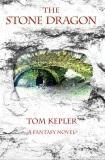Tom Kepler's Blog, page 38
November 25, 2011
Book Review: The Dragon Keeper's Handbook, by Shawn MacKenzie
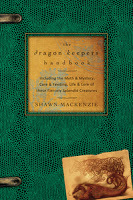 Reference books must fulfill two primary functions: they must be useful and useable. A third can probably be added for our favorite reference books: they must be enjoyable. The Dragon Keeper's Handbook, by Shawn MacKenzie, fulfills all three requirements, being full of wisdom and whimsey.
Reference books must fulfill two primary functions: they must be useful and useable. A third can probably be added for our favorite reference books: they must be enjoyable. The Dragon Keeper's Handbook, by Shawn MacKenzie, fulfills all three requirements, being full of wisdom and whimsey. Some reference books provide the reader special information, though, available nowhere else.
Sherlock Holmes was a real detective, and Dr. Arthur Conan Doyle was his agent, shielding the detective and Watson from the public. William Baring-Gould's The Annotated Sherlock Holmes , provides more than ample information to substantiate Holmes's life and times.
Lord Greystoke, known to most as Tarzan, was also a living person--sensationalized by author Edgar Rice Burroughs. The definitive biography of Lord Greystoke, Tarzan Alive , by Philip Jose Farmer, chronicles the life of this great man in detail.
And dragons are real, as is documented in Shawn MacKenzie's delightful account, The Dragon Keeper's Handbook , which includes "the myth and mystery, care and feeding, life and lore of these fiercely splendid creatures." Adding to the delight of MacKenzie's content are the interior illustrations by artist Don Higgins.
Some may argue that Holmes and Tarzan are the products of writers' imaginations and that dragons are only real in the mythic world. How fortunate we are that writers provide us the opportunity to enjoy and learn truth from myth and legend, and not just the truth of "facts."
"Thank the gods there are Dragons, or we'd surely have to invent them. And what a tall order that would be, to fashion out of whole cloth such fiercely splendid creatures! Such wild guardians and sage counselors, champions of sky, earth, and sea!"As a word guy, my first joy was to come across and learn new words, such as cryptoherpetology, which means "Secret Serpent Science, Remarkable Reptile Research, and Dragon Studies. The field for serious dracophiles. Cryptoherpetology also covers such non-dragons as the cockatrice, chimera, and a wide variety of water beings who fall in that grey area between fish and reptile."
The organization of the book is as follows:
Part I: From Tooth to Tail: The Natural History of DragonsPart II: The Long and Winding Road: Dragons' March Through MillenniaPart III: The Care and Feeding of Dragons From this reference text I gained a great deal of information regarding True Dragons and false dragons that was only hazy to me before. I also acquired information on the history of our planet and its cultures around the world, couched in the delightful perspective of dragon evolution and interaction with humanity. Finally, the handbook provided for me a wonderful perspective regarding sustainable environmentalism--perhaps mytho-environmentalism?
Following the main text are epilogue, glossary, and bibilography and suggested reading sections.
The Dragon Keeper's Handbook is a fun, informative, and thought-provoking compilation of fascinating information. Let me end with just one last specific comment on MacKenzie's slant on our planet's current loss of habitat. Ultimately, when we destroy our habitat, our wild places, this leads not only to the destruction of that physical environment which sustains us but also to to the destruction of those myths which also sustain us.
We must preserve our earth and its wild places. We must preserve our myths and dreams and wonder of the world. Shawn MacKenzie's The Dragon Keeper's Handbook reminds us of our responsibilities in an informative yet whimsical style. The book stands proudly on my reference shelf.
Copyright 2011 by Thomas L. Kepler, all rights reserved
Published on November 25, 2011 16:36
Giving Thanks for the Gift of Consiousness
 Yesterday, after our traditional Thanksgiving day meal, a friend requested that the eight of us around the dinner table express what we were grateful for.
Yesterday, after our traditional Thanksgiving day meal, a friend requested that the eight of us around the dinner table express what we were grateful for.I was not surprised with the responses, but hearing those responses from people family, friends, and acquaintances--all those "gratitudes" in one place at one time--was illuminating.
What everyone said centered around our common experience of being able to experience more fully our inner selves in an effortless and simple way through the practice of Transcendental Meditation. Out of this experience flowed the blessings of our lives, our expressions of gratitude. We were grateful for the support of our family, our friends, and our community. We were grateful to have the opportunity to have good meaningful work to do. We were grateful for our health and our curiosity and discernment in life. We were grateful for the peace and silence that coexisted along with activity.
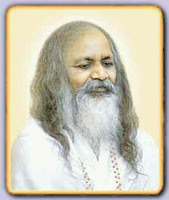 We felt gratitude to Maharishi Mahesh Yogi, the man who revived and brought to the world the techniques for gaining our full potential in life. Easy, simple, effortless, in accord with the nature of the mind--how fortunate I was to find a way to keep myself alert and healthy, without having to change belief or philosophy . . . yet understanding over time those beliefs and philosophies more profoundly from the perspective of more comprehensive awareness, knowledge of the self. How fortunate to practice TM and to have not only my own experience of progress in life, but to see and follow the scientific research that validates my experience through the window of science.
We felt gratitude to Maharishi Mahesh Yogi, the man who revived and brought to the world the techniques for gaining our full potential in life. Easy, simple, effortless, in accord with the nature of the mind--how fortunate I was to find a way to keep myself alert and healthy, without having to change belief or philosophy . . . yet understanding over time those beliefs and philosophies more profoundly from the perspective of more comprehensive awareness, knowledge of the self. How fortunate to practice TM and to have not only my own experience of progress in life, but to see and follow the scientific research that validates my experience through the window of science. The expressions of gratitude from around the Thanksgiving table revolved around this one focal point: thankfulness for being at this place at this time with our ability to do good work for the world.
There is an expression for this sentiment: selflessness. I think that expression is almost backwards, though. When we feel that the world is our family, we are not lacking in self. Rather, we are so fully expressed in our cosmic selves that the self that exists within boundaries is full and undemanding, is bountiful and giving. We spontaneously wish to help others.
My cup runneth over.
I am grateful to share such experience with such people on Thanksgiving day and every day.
Copyright 2011 by Thomas L. Kepler, all rights reserved
Published on November 25, 2011 03:24
November 22, 2011
Email Signatures and Marketing for Independent Publishers
How many clicks through links does it take to get to your novel?
I counted mine from my email signature, and it was three or four, depending on reader choice. Too many.
I also wanted to add the image of my novel to my signature. Using Gmail, it was not as easy as other email services, perhaps, but I've lowered the steps to two, rather than one, which isn't bad.
My email signature will not look like this:
This seems professional and unobtrusive--and is only one click from the store.
Copyright 2011 by Thomas L. Kepler, all rights reserved
I counted mine from my email signature, and it was three or four, depending on reader choice. Too many.
I also wanted to add the image of my novel to my signature. Using Gmail, it was not as easy as other email services, perhaps, but I've lowered the steps to two, rather than one, which isn't bad.
My email signature will not look like this:
The image, the short pitch, two excerpts from reader reviews, links to buy, a link to my website, and a comment on other sites for purchase.
Dream magic is the most dangerous of magics because it is so difficult to control.
"The Stone Dragon will challenge the reader to think about the power of thought and attitude and their effect on the place we forge for ourselves in our world."
"There is an underlying theme of consciousness throughout the book and while Glimmer is on his many adventures. The ending of the story is fantastic and certainly doesn't disappoint."
Amazon (Book and Kindle)
Barnes and Noble (Book and Nook)
Smashwords (e-book)
Tom Kepler Writing (Blog and Website)
Also available through Apple, Sony, Kobo, the Diesel eBook Store, & eBooks Eros
This seems professional and unobtrusive--and is only one click from the store.
Copyright 2011 by Thomas L. Kepler, all rights reserved
Published on November 22, 2011 04:39
November 19, 2011
Consciousness-based Writing: Thoughtful and Spontaneous
 I tend to think about how I write from the perspective of my school's approach to education.
I tend to think about how I write from the perspective of my school's approach to education.Maharishi School approaches learning from the angle of "Consciousness-Based education," the idea that learning involves more than content, that the expansion of the learner's ability to learn is also essential. CBE uses the Transcendental Meditation technique to expand the students container of knowledge--consciousness.
Two qualities of the unified field of consciousness are "thoughtful and spontaneous."
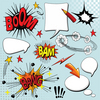 Like many of the qualities of the unified field, these two qualities, even though paired, are opposites. Thoughtful implies time spent in consideration; spontaneous implies little or no time spent in consideration. Paired, though, the larger, inclusive idea is that consciousness can be thoughtful and spontaneous at the same time--the two qualities are not exclusive in an awareness that is comprehensive.
Like many of the qualities of the unified field, these two qualities, even though paired, are opposites. Thoughtful implies time spent in consideration; spontaneous implies little or no time spent in consideration. Paired, though, the larger, inclusive idea is that consciousness can be thoughtful and spontaneous at the same time--the two qualities are not exclusive in an awareness that is comprehensive.I hardly ever write totally without focus anymore. Maybe time is just too precious, or maybe since I have so many ideas, why should I start writing without taking advantage of those good ideas? However, both unexpected ideas come to mind and planned plot sequences are advanced when I sit to write. This was certainly true with The Stone Dragon . The sequence with the ice naiad was totally unplanned, yet the gnome's quest sequence that took several chapters to develop was added with the second draft after planning out the entire addition.
Even when I begin creating a story from an idea--even if that idea is quite developed in my mind or in my notes--I always allow the wonderful possibility of spontaneous inspiration to move the storyline in unexpected directions, for new characters to walk (or ride or fly or swim) into the story and do something unexpected.
I once had a friend (who has sadly now passed away) ask me what happened at the end of a chapter of my young adult novel Love Ya Like a Sister . I said, "I don't know what those two characters did. I didn't think it was any of my business."
"I hate it when writers do that," she laughed. "You wrote the book. You created those characters.What do you mean it's none of your business!"
It was my honest response, though. I wasn't jerking her chain--or at least not much. Sometimes we have to hold to the meaning; sometimes we have to let it go because the meaning is greater than a pre-determined chain of events.
Learning takes place beyond what we already know. Learning expands our knowledge. Discovery, by definition, occurs in the realm of the unknown, or perhaps where the known and unknown meet.
I allow more spontaneity and risk-taking in first drafts. After all, no one in the world knows about that story except me. I can do anything I want. However, in the later drafts, thoughtfulness predominates, with spontaneity hanging around in the background, just waiting for the chance to suggest something totally different and new.
Thoughtfulness and Spontaneity are my two friends. They are quite different and often disagree, but the three of us make a great team.
Without my two pals, will I ever be able to complete a short story about an eight-year-old boy who is an autistic magician who listens to dragons? That's what I'm working on now. And the answer is "I have no idea--by they do."
Copyright 2011 by Thomas L. Kepler, all rights reserved
Published on November 19, 2011 07:00
November 17, 2011
Book Review: Back from Chaos, a fantasy novel
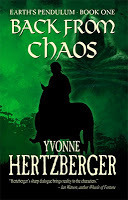 Return from Chaos is a fitting title for Yvonne Hertzberger's fantasy novel.
Return from Chaos is a fitting title for Yvonne Hertzberger's fantasy novel.With degrees in psychology and sociology, the author's interest in balance in life leads the action of the novel. The tension of the novel is the imbalance in nature--individual, social, and governmental--and how nature seeks to balance those imbalances.
Earth magic and earth energies have been disrupted. The "magic" of the novel is a seer who knows the disruptions of earth energy and sees how they must be set in harmony again. The author steps out of the category of "just another fantasy to be read, enjoyed, and put aside" by focusing on this earth magic--that individual action affects the world, and that the world affects the individual, that true harmony is both universal and specific.
The newly crowned king and his newly wed wife must find harmony in their relationship, for that harmony must extend to the kingdom. The king's assassin and a brutally raped attendant to the queen seek to overcome their experiences in order to find a means of expressing their love. Other characters seek their places in the new kingdom that has been forged on the hard anvil of battle.
The best example of nature seeking harmony is in the love relationship of two characters: Klast, the king's assassin, and Brensa, lady in waiting. Klast was abused as an orphaned child and has grown into a loyal yet emotionless assassin. Brensa is violently raped during the aftermath of a war. The author devotes a significant portion of the novel to chronicling how these individuals can find and exhibit love--both emotionally and physically. She details how emotional stress is made manifest in the physiology, and how that can lead a woman to not be able to physically express her love with a man. She details how physical abuse can manifest in the emotions, leading to a man not being able to express the tender giving of love. These individual conflicts are part of the "earth magic" that must be brought to harmony in the novel.
A multiple third person point of view presents the reader an ensemble of main characters, from servants to royalty, and then follows their efforts to come back from the chaos of disfiguring stresses and experiences to find harmony. The novel reads quickly, almost as a narrative history, due to the emphasis on a handful of couples, the main characters. One could say this is both the novel's strength and weakness. Moving from one character to another diffuses the connection to the characters, yet that panoramic perspective also creates an expanded vision of the events of the story. We witness the lives of people living in interesting times, as the saying goes.
War, civil strife, plague--these are the background for the novel Back from Chaos. I found the novel to be a quick read, perhaps because of the panoramic style of the storytelling. It wasn't until I had finished the book that I realized the unusual and defining qualities of the novel. War, death, the individual brutalities of child abuse and rape--the honest and human assessment of these disharmonies in outer nature and our inner nature make this book different than many novels of the fantasy genre.
If you want a quick read of a fantasy novel, Back from Chaos will provide you that. Don't be surprised, though, if after finishing the novel, you find yourself thinking about its very human challenges. How do we treat one another with dignity and respect? How do we create harmony in our individual lives and radiate that harmony into the greater world?
Author Yvonne Hertzberger has asked that the Kindle edition published by herself be purchased--and not the iUniverse edition. Links provided in this review are to the Hertzberger edition.
Published on November 17, 2011 04:43
November 15, 2011
Giving Thanks for Time to Write
 Thanksgiving vacation is a little over a week away now.
Thanksgiving vacation is a little over a week away now.I get five days off, but for me it is not just the time for rest and rejuvenation. Thanksgiving vacation has become a time of beginning a new writing project or of providing a significant boost to a current project. It's practically a tradition now.
I thank the gods of school vacations for that opportunity.
In sports there is a term, momentum. I think that term applies to writing also. I know, anyway, that when I write regularly on a project every day, it begins to linger in the air around me. Everything applies and references that reality. Ideas come to me, and I have time to apply them, to bring them to the page (computer file!) before they get distracted and flitter away.
This Thanksgiving I want to finish the first draft of "Who Listened to Dragons." I'm excited about the idea of publishing a short story on Kindle and then selling it for $.99 as a short work that introduces a longer work--The Stone Dragon.
I also am excited to begin looking at the first draft of Dragons of Blood and Stone to see how the second draft should go. I've run off a hard copy--267 pages--something I don't normally do, but I feel there may be some structural changes that having actual pieces of paper may help me effect.
I also look on the days around Thanksgiving as a time to reflect on the year's activity of spring and summer. Maybe that's my gardening self stepping forward. After the harvest, it's good at autumn to relax and enjoy the moment.
I hope for all of you to enjoy the moment and harvest something this season beyond the launch of the Christmas buying frenzy. We deserve more than that.
Copyright 2011 by Thomas L. Kepler, all rights reserved
Published on November 15, 2011 05:00
November 10, 2011
New E-Book: Science of Being and Art of Living, by Maharishi Mahesh Yogi
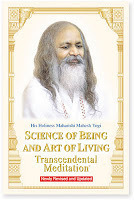 Press Release from Maharishi University of Management Press:
Press Release from Maharishi University of Management Press: Science of Being and Art of Living
Amazon Kindle
Apple iTunes
Maharishi University of Management Press
This classic description of how the Transcendental Meditation® technique can be applied to all areas of human life was first published in 1963 and has been reprinted more than 20 times.This is the third Transcendental Meditation Movement book to be offered as a ebook in the past 8 months, joining Transcendental Meditation by Robert Roth and Super Healthy Kids by Dr. Kumuda Reddy and Linda Egenes. Many more publications will be coming soon including Maharishi's Bhagavad Gita and Conversations with Maharishi by Dr. Vernon Katz. Also the audio version of the Science of Being will soon be available on CD's.This is a book that will give your e-reader a status beyond "entertainment." Written in a straightforward and easy-to-read style, Maharishi's classic presents compelling reasons to develop your transcendental inner self with explanations on the relationship between "transcendental deep meditation" and happiness and success in life.
Published on November 10, 2011 05:00
November 8, 2011
Researching Dragons: my intuition and my writing
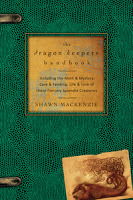 My fantasy novel
The Stone Dragon
leapt from my head.
My fantasy novel
The Stone Dragon
leapt from my head.It was over a Thanksgiving holiday when I was at home alone, writing from a vague idea that gnomes had gotten bad press (those long beards and silly, pointy hats) and that dragons were cosmic embodiments of the laws of nature.
From that came about seven thousand words in three days and the concept for the novel.
Now I am reading Shawn MacKenzie's The Dragon Keeper's Handbook , a compendium of dragon lore, and I'm learning many new details about dragons that are providing me with ideas for new stories for my Dragons of Blood and Stone series.
I have one story for a little dragon, and the book has a section on "pseudo-dragons." I had planned to call them "little cousins" in my story (and probably still will). My money-hungry dragon in Dragons of Blood and Stone should benefit from MacKenzie's section on Western dragons, and the sand dragons in my short story "Who Listened to Dragons" should benefit from the section on Wyrms. I've already gained insight into DBS and "WLD" from a section I've just read on shape-shifting dragons.
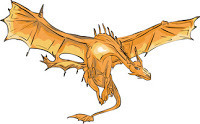 In DBS and "WLD," there are three dragons who are always together. I call them the Cognoscenti. I am gaining more insight into how to develop the trio by reading about all the various types of dragons and false-dragons. Perhaps my shape-shifting dragons are somewhat like the Three Musketeers. Perhaps they embody the qualities of Rishi, Devata, and Chhandas or Vata, Pitta, and Kapha from the Vedic tradition. Mostly likely, they will just be themselves as they have come to me. No need for me to muddy the water with idiosyncratic expression.
In DBS and "WLD," there are three dragons who are always together. I call them the Cognoscenti. I am gaining more insight into how to develop the trio by reading about all the various types of dragons and false-dragons. Perhaps my shape-shifting dragons are somewhat like the Three Musketeers. Perhaps they embody the qualities of Rishi, Devata, and Chhandas or Vata, Pitta, and Kapha from the Vedic tradition. Mostly likely, they will just be themselves as they have come to me. No need for me to muddy the water with idiosyncratic expression.Intuition--what characterization fits my feeling and intent--and research--what fits historical precedent--dovetail to new stories and perspectives. MacKenzie's The Dragon Keeper's Handbook , as a field guide to dragons, will help as I explore the terra incognita of my imagination.
Meanwhile, what am I doing rambling? My friends are calling me. They await patiently to become.
Copyright 2011 by Thomas L. Kepler, all rights reserved
Published on November 08, 2011 05:00
November 5, 2011
Blogger Provides an Updated Interface--But Does "Updated" Mean Improved?
 Blogger has provided a new look for its users to try.
Blogger has provided a new look for its users to try.I did, and like a fool forgot to back up my template. The updated Blogger interface has some cool features, such as providing a "magazine" look to the blog posts.
The process is not complete, though, so when I checked out the new interface, my current design was altered significantly. Also, the new interface lacks some of the features that the current templates have--at least to my understanding. My masthead was removed, my gadgets disappeared, and some HTML that I'd customized for replying to comments was lost. The "update" was not just for the post section of the template but affected the sidebars also.
If you plan to play around, be sure to save your current template settings. Then you can go back to what you have. Let's hope so, anyway. I'm not convinced that my current look is exactly what I had before.
So be careful when trying that button. Google is also playing around with gmail. I'm trying not to be a conservative stick-in-the-mud, but sometimes all these changes from Google, Microsoft, and their ilk seem to be just a way to demonstrate change rather than improvement.
Give me new things to try. Let me pick and choose. I applaud Blogger for its efforts. Before urging us to try the changes, though, first remind us to save our current templates.
Copyright 2011 by Thomas L. Kepler, all rights reserved
Published on November 05, 2011 07:00
November 3, 2011
A Spooky Post-Halloween Confession
[image error]
I'm not sure if this is one confession or two: Snickers and Coca Cola.
I try to eat healthy food--and do a pretty good job of achieving that goal: non-GMO and organic. However, there are two temptations that I succumb to occasionally: Snickers candy bars and Coca Cola.
I've tried healthy substitutes and found some pretty good ones, but . . .
 Halloween is a challenge because, even though I live in an area that is outside the trick or treat zone, some years we get a kid or two knocking on the door. What to buy just in case? Somehow, it's those little fun-sized Snickers bars. Any then nobody shows and those little treats are just sitting there, calling to me: "Tom, we're just tiny little candy bars." Four bars later, the mathematical side of my brain kicks in to tell me that four tiny bars equals one big bar.
Halloween is a challenge because, even though I live in an area that is outside the trick or treat zone, some years we get a kid or two knocking on the door. What to buy just in case? Somehow, it's those little fun-sized Snickers bars. Any then nobody shows and those little treats are just sitting there, calling to me: "Tom, we're just tiny little candy bars." Four bars later, the mathematical side of my brain kicks in to tell me that four tiny bars equals one big bar.
Coca Cola is more of a traveling temptation. While driving down an interstate freeway in the hot summer, a little tired but miles to go, why not grab a Coke when paying for a tank of gas? What's a little more acidic chemical in an already heated up physiology?
Sustainability is both a journey and a destination.
At least, looking at the total year, these are the exceptions, my little fun-sized secrets. I thought I'd share them. It's said that confession is good for the soul--maybe that also goes for the physiology.
Copyright 2011 by Thomas L. Kepler, all rights reserved
I try to eat healthy food--and do a pretty good job of achieving that goal: non-GMO and organic. However, there are two temptations that I succumb to occasionally: Snickers candy bars and Coca Cola.
I've tried healthy substitutes and found some pretty good ones, but . . .
 Halloween is a challenge because, even though I live in an area that is outside the trick or treat zone, some years we get a kid or two knocking on the door. What to buy just in case? Somehow, it's those little fun-sized Snickers bars. Any then nobody shows and those little treats are just sitting there, calling to me: "Tom, we're just tiny little candy bars." Four bars later, the mathematical side of my brain kicks in to tell me that four tiny bars equals one big bar.
Halloween is a challenge because, even though I live in an area that is outside the trick or treat zone, some years we get a kid or two knocking on the door. What to buy just in case? Somehow, it's those little fun-sized Snickers bars. Any then nobody shows and those little treats are just sitting there, calling to me: "Tom, we're just tiny little candy bars." Four bars later, the mathematical side of my brain kicks in to tell me that four tiny bars equals one big bar.Coca Cola is more of a traveling temptation. While driving down an interstate freeway in the hot summer, a little tired but miles to go, why not grab a Coke when paying for a tank of gas? What's a little more acidic chemical in an already heated up physiology?
Sustainability is both a journey and a destination.
At least, looking at the total year, these are the exceptions, my little fun-sized secrets. I thought I'd share them. It's said that confession is good for the soul--maybe that also goes for the physiology.
Copyright 2011 by Thomas L. Kepler, all rights reserved
Published on November 03, 2011 06:50

